#unicode pad
Explore tagged Tumblr posts
Note
do your little symbols for your tags mean anything like
“ ๘ೌ಼⠀♥︎⠀__ __⠀.⠀ೄ⠀ ͡꒱ ” and “ ⋆ .˚ ︎ /ᐠ⠀dad's gonna catch u⠀. ✦ ˚ * ”
not exactly, i just use different tags so i can differentiate the fandoms when i’m making the bots! i know some of these symbols are letters and/or numbers in other languages, but i’m not really sure which ones, i usually just make my own tags in the unicode pad. ‹3



there’s a lot more to it than that, but if you don’t know unicode pad, you should!!!
3 notes
·
View notes
Text
𝓕𝗮𝗅𝗅𝐢𝗇𝗀 ໋ 𝗂𝗇ׅ𝆬𝆬 ໋⸼ 𝗹𝗈𝐯ꫀ ֶָ⋅ 𐙚


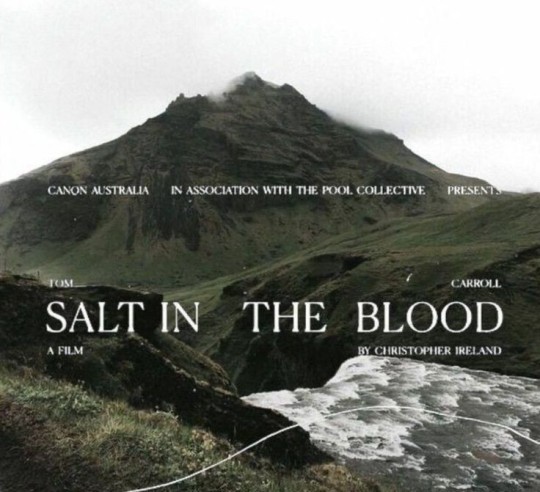
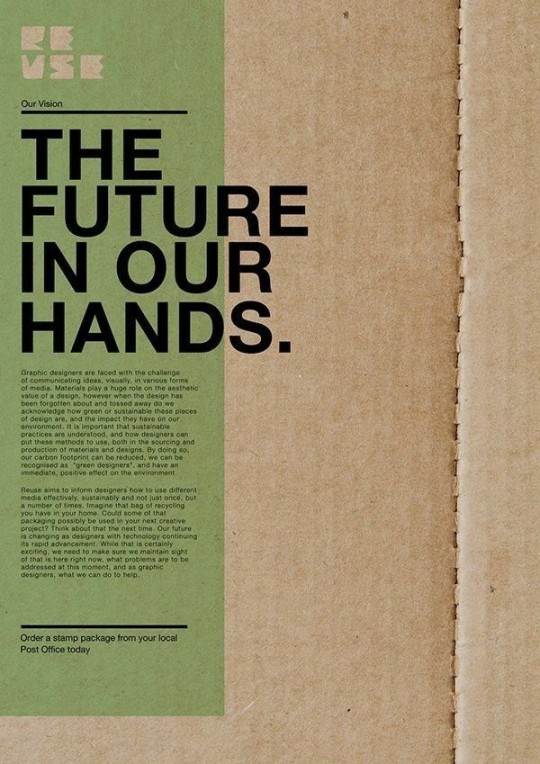

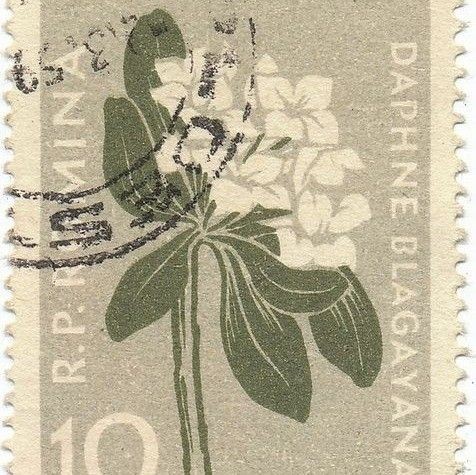
𝓦𝗈𝐧𝗒٫ 𝟶𝟺


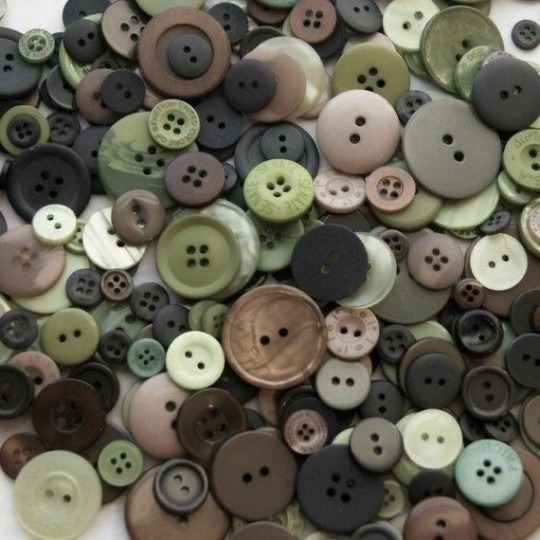
30 notes
·
View notes
Text
ᯓ MOBILE EDITING APPS ୨୧
!!! % multipurpose: 𖥻
★ picsart
★ canva
⠀
!!! % for text: 𖥻
★ phonto
⠀
!!! % for drawing: 𖥻
★ ibispaintx
⠀
!!! % to fix quality: 𖥻
★ remini
⠀
!!! % for filters, effects + preset edits: 𖥻
★ B612
★ snow
★ soda
★ prequel
★ epik
★ hypic
★ glitch lab
★ vaporgram
⠀
!!! % for presets: 𖥻
★ polarr
★ foodie
★ vsco
★ koloro
★ lightroom
⠀
!!! % to edit and make gifs: 𖥻
★ gif maker, gif editor
★ gif maker - gif editor
⠀
!!! % to remove background (to make pngs): 𖥻
★ background eraser
(you can also use picsart for this)
⠀
!!! % to find pictures and resources like moodboards, unfiltered ulzzangs, editing needs, etc: 𖥻
★ deviantart
★ pinterest
★ tumblr (if u do some research)
⠀
!!! % font keyboard: 𖥻
★ fonts keyboard
★ stylish text - font keyboard
⠀
!!! % for aesthetic symbols: 𖥻
★ unicode pad
⠀
!!! % for kaomojis: 𖥻
★ kaomoji
⠀
!!! % for video editing: 𖥻
★ alight motion
★ capcut
★ kinemaster
★ rarevison vhs camcorder (it's just for the vhs filter)
★ vn
★ funimate
#editing needs#resources#aesthetic#kaomoji#symbols#aesthetic symbols#carrd icons#messy bios#bios#bio#soft#messy moodboard#messy layouts#messy icons#kpop moodboard#kpop layouts#kpop icons#aesthetic moodboard#aesthetic bios#aesthetic icons#aesthetic dividers#rentry inspo#kpop#kaomojis#carrd#icons#twitter#layouts#messy symbols#inspiration
949 notes
·
View notes
Text

Genshin Impact photography!
(First post on tumblr:D)
5 notes
·
View notes
Text
There are ~150,000 assigned code points in Unicode. At 500 glyphs to a page that'd take only 300 pages. Vividly imagining a telegraph operator decoding UTF-8 in his head, looking up scalar values in his reference book, consulting another much slimmer volume with flow charts to resolve zero-width joiners, picking an emoji rubber stamp out of a drawer, pressing it into the correct Fitzpatrick skin color ink pad, adding the reaction to the right sheet in the ring binder of Slack messages and standing by for the next transmission
221 notes
·
View notes
Text
Version 621
youtube
windows
zip
exe
macOS
app
linux
tar.zst
I had an ok week. I fixed some bugs, did some duplicates work, and cleaned up some build and environment issues, and there's some more user work for ratings.
full changelog
ratings
Thanks to a user, we have more rating options.
First, under options->thumbnails and options->media viewer, you can finally set the size of ratings!
Second, under services->manage services, you can now set many more 'star shapes: triangles pointing up/down/left/right; diamond; rhombus pointing right/left; pentagon; hexagon and small hexagon; six point star; eight point starburst; hourglass; large + and X shapes.
In an experiment, you can also set custom svg star shapes. I've thrown a couple of very basic examples into a new install_dir/static/star_shapes directory, but you can add more yourself. Try to add something that's squarish and has a clean simple sillhouette on top of a transparent background.
We're debuting some unusual new drawing tech here, and you may see some new misalignments or clipped borders at certain sizes. I'm going to keep working here to nail down good padding and margins, and we'll play around with svgs more to see about getting nice clean borders showing up. If it all works out, I expect we'll migrate all the existing hardcoded polygons to svg. We're also looking at unicode character icons too.
duplicates stuff
The duplicates filter now prefetches the next five pairs of images, for faster image rendering (it used to just do the next pair). You can now alter this number under options->speed and memory.
I fixed an issue where flat colour images of the same num_pixels but differing resolution were counting as pixel duplicates.
The duplicates auto-resolution system now lets you do 'system:known url' and 'system:number of urls' for 'test A or B', and 'system:number of urls' for 'test A against B using file info'.
build stuff
I went on a 'cleaning out old libraries' kick this week, prompted by a user report about the PSD-reading library we were using (psd-tools). The psd library was pulling in a drawing library, aggdraw, which, in Linux at least, was including a very old and vulnerable version of a bz2 decoder. I don't know if this decoder ever actually ran for what we were doing, but I didn't like having this complicated library with possible security problems when all we use it for is grabbing resolution, icc profile, and a preview image. I hacked together a file parser and some other solutions we had lying around, including an ffmpeg renderer, and now the program no longer needs psd-tools. Some PSD rendering may be a little worse, but I also improved some transparency handling, so some files are better.
Similarly, I removed the swfrender executables from the bin directory. These are a fun old tool to make flash thumbnails, but the project has been discontinued for a long time, and the exes are very old and we shouldn't be relying on them, especially for a crazy format like flash. New flash files you import will get the default 'flash' icon. For the future, the excellent Ruffle library is putting together a modern version of this render executable, so when that is ready, I'll investigate bringing this functionality back.
On the other side of things, the AVIF library test last week went well, so I'm folding that in today. We should have better AVIF rendering.
next week
I want to integrate the 'A is an exact match of B' tech into the manual duplicate filter so we can test it with real world data.
3 notes
·
View notes
Text
꒰ ͙ ❄ SHOW ME UR GIFFIES . ꒱
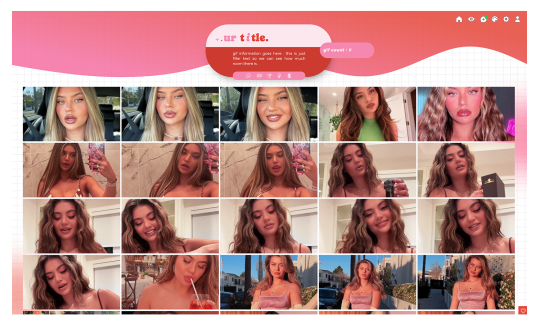
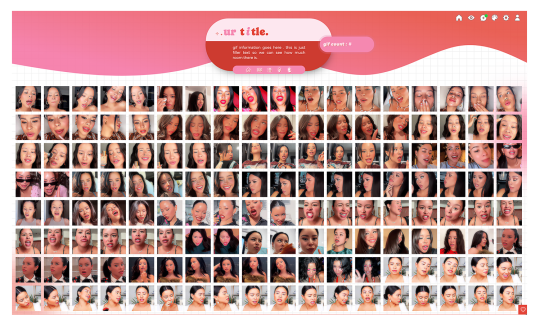
greetings , pookies ! SHOW ME UR GIFFIES is a fun , vibrant lil gem of a page to host and display all of ur beautiful gifs ! there are two versions available to download , one suited for gif icons and one suited for larger gifs . sizes were tested with 70 x 70 px icons and 268 x 150 px gifs but should be accommodating to various sizing discrepancies ! there are annotations through the page to help u get the precise look u want . as per usual , let me know if u encounter any errors and i will do my best to troubleshoot asap !
if u intend on using this theme or just want to be a supportive hottie , please give this post a like and a reblog ! stay hydrated and be sure to pet a cute animal today ! mwuah 💋 💋 💋 !

ⅰ. THEME FEATURES .
x. 100% java free x. cute , geometric grid line background x. aesthetically pleasing gradient wave header w / annotations to help change the colors + link to shade finder software to help u design ur gradient x. pill - shaped container to house ur title and other goodies x. designated area for ur description x. animated pill container to state gif count x. five links in mini nav hub ; one to redirect to ur main , one to go to ur inbox , one to link to ur main list of resources , one to direct users to ur commission info ( if applicable ) , and one to bring the user back to the dash . all of these links can be edited / deleted to ur liking x. detailed annotations to edit ur page's margins and padding x. optional ::before sector to add symbols / emojis before ur title that are customizable in the css x. links for various unicode character / emoji resources within the code to use for ur title x. for a more detailed compilation of credits and features , please see the google doc containing the code

͙ ❄ this page is a patreon exclusive : want access ? consider signing up to join the fam - a - lam to get ur hands on this theme as well as my entire coding catalogue . click here to learn more !
source link directs to a live preview of SHOW ME UR GIFFIES ! original gif icon drop of cierra ramirez can be found here .

#rph#rpt#indie rph#rp theme#rp page#gif page#mine#rec#for patreons#for patrons#round 2 bc my previous post wasn't appearing ???
22 notes
·
View notes
Text
tier list of every kirby final boss i've fought which is basically all of the ones anyone cares about
gee, this feels familiar (i have like 2 more kirby tier lists i want to make so get used to this i say as if i have followers)

elaborations under the cut but four main things, there's no particular order within the tiers, these lump in the later phases and EX/soul versions when applicable because wtf would be the point of putting i.e. marx and marx soul next to each other, was i padding the list by including each super star mode's final boss instead of just marx and galacta knight? yes but i wanted to put revenge of meta knight meta knight in S tier and if you want to argue that he doesn't deserve it you're wrong, and void gets a dedicated F- tier because trying to learn their lore gave me literal headaches and i will always hold that against them (if that didn't happen they would've been, like, a C maybe, i didn't like them as a final boss even besides that lol)
so, uh, obviously i wasn't factoring just the fights, but also how much i like the characters, the music, the scenario, etc. which are the only reasons 02 and drawcia are in the heart tier if it was just the fights themselves those would've been WAY down, same goes with star dream and DL2 dark matter in particular both for the identical reason of I HATED THEIR FIGHTS THEY WERE SO FUCKING HARD BUT DAMMIT THEY'RE SO FUCKING AWESOME
I had to put at least one dedede in D tier out of obligation and DL1/I Guess Spring Breeze was the one who got damnation due to being the most boring, Dedede's a fun character but I don't think anyone can blame me and also DL1's EX mode was a nightmare
Blowout Blast Dedede is the one boss where I didn't fight it's harder variant(s) because I couldn't be bothered to unlock the extra levels in that game lol, unless not fighting nightmare as meta knight in nightmare in dream land also counts because i genuinely didn't know that was in game when i played but i'm going back to try the mode soon so uh we'll see i guess (edit: well, uh, i didn't know you don't even fight nightmare as meta knight, whoops)
dark nebula and dark crafter are in F for being disappointingly easy final bosses, yin-yarn and dededestroyer Z are in F for being so fucking hard i had to use 30+ savestates for each i think and both were particularly insulting to beat because i tried to no-hit yin-yarn for the extra level patch (only reason i used so many savestates) only for him to shit beads all over me just for killing him unlike every other boss meaning i wasted over an hour of my time and battle royale's ending was like 40 seconds long after dededestroyer Z took me 3+ hours
the final boss from the cancelled kirby gamecube game is here for the same reason kirby red diamond was in my kirby game tier list lol, except it's in F tier instead of heart because me and my friends involved in the project we were digging up esoteric kirby stuff for could not fucking decide on what to do with this character and argued for hours straight on multiple days and we still have no clue at all
unicode i used for void tier because that took me forever: ⬮ ٜ ⬮ it doesn't display the same between any two websites so delete and add spaces as necessary or make a better one idk
4 notes
·
View notes
Note
Hii!! i love your ao3 skins, but i wanted to ask- is there an option to remove the icons that appear with the tags? i couldn't find a way.
ty!!
you would need to delete the code for it ::}! the code i use for that is this:
.characters a:before, .relationships a:before, .freeforms a:before, .meta a:before { color: COLOR; content: "\UNICODE"; padding: 0 0.25em 0 0; }
.splash .browse li a:before { color: COLOR; content: "\UNICODE"; padding: 0 0.25em 0 0; }
.kudos a:before { color: COLOR; content: "\UNICODE"; padding: 0 0.25em 0 0; }
first one is the one before the tags, and third one is the one before the kudos
to be honest i have COMPLETELY forgotten what the second one is, i cannot find it ANYWHERE!! so uh take at your own risk i guess???
just delete these from the code and they'll go away ::}
3 notes
·
View notes
Note
hallo! may i ask if it's okay but where do you get the symbols? :o
i got everything from unicode pad :3
9 notes
·
View notes
Note
This actually isn't a comma, it's a "Single Low-9 Quotation Mark", U+201A.
To type it, as previously mentioned, hold Alt, type "0130" on the numpad, and release Alt. If you don't have a number pad, you can hold Alt and Fn while typing "0130".
In some applications, you can type the Unicode code point (in this case, 201A), then press Alt + X. Unfortunately there doesn't appear to be an easy, built-in way to type Unicode characters on Android or iOS, but there are apps available that allow you to do so.
Lottie are those COMMAS in your tags what is this magic I must know
IT IS A SPECIAL COMMA THAT YOU MUST PASTE INTO THE TAG
I HAVE BEEN COPYING AND PASTING THE SPECIAL COMMA FROM SOMEONE ELSE’S TAG FOR YEARS
SOMETIMES YOU JUST NEED A COMMA
30K notes
·
View notes
Note
the symbols in your tags are telugu letters btw!
yesss! it’s so pretty, i always see them on unicode pad and i have them favorited, i absolutely love them :( ♡
2 notes
·
View notes
Text



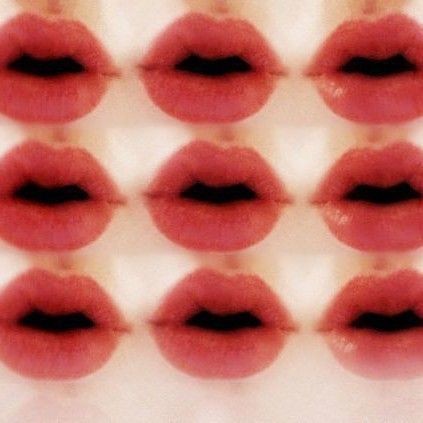


₊✩‧₊˚౨🍒ৎ˚₊✩‧₊


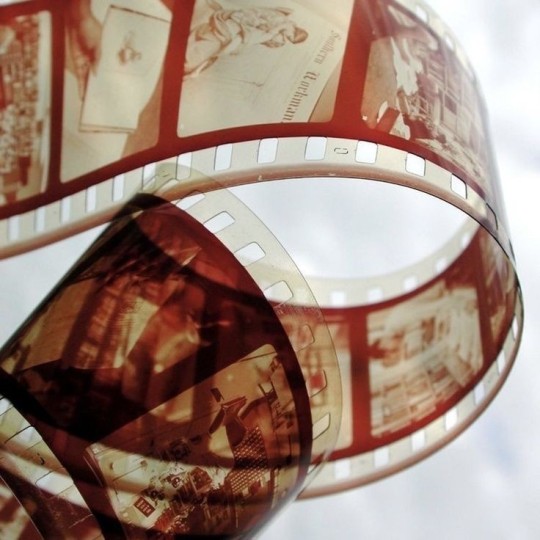
9 notes
·
View notes
Text

A prescription, often abbreviated ℞ or Rx, is a formal communication from physicians or other registered healthcare professionals to a pharmacist, authorizing them to dispense a specific prescription drug for a specific patient. Historically, it was a physician's instruction to an apothecary listing the materials to be compounded into a treatment—the symbol ℞ (a capital letter R, crossed to indicate abbreviation) comes from the first word of a medieval prescription, Latin recipe (lit. 'take thou'), that gave the list of the materials to be compounded.
Format and definition
℞
Medical prescription
In Unicode U+211E ℞ PRESCRIPTION TAKE (℞)
Related

The symbol "℞", sometimes transliterated as "Rx" or "Rx", is recorded in 16th century manuscripts as an abbreviation of the late Latin instruction recipe, meaning 'receive'.[a] Originally abbreviated Rc, the later convention of using a slash to indicate abbreviation resulted in an R with a straight stroke through its right "leg".[1][b][c] Medieval prescriptions invariably began with the instruction from the physician to the apothecary to "take" certain materials and compound them in specified ways.
For a communication to be accepted as a legal medical prescription, it needs to be filed by a qualified dentist, advanced practice nurse, physician, or veterinarian, for whom the medication prescribed is within their scope of practice to prescribe.[citation needed] This is regardless of whether the prescription includes prescription drugs, controlled substances, or over-the-counter treatments.[citation needed]
Prescriptions may be entered into an electronic medical record system and transmitted electronically to a pharmacy. Alternatively, a prescription may be handwritten on preprinted prescription forms that have been assembled into pads, or printed onto similar forms using a computer printer or even on plain paper, according to the circumstances. In some cases, a prescription may be transmitted orally by telephone from the physician to the pharmacist. The content of a prescription includes the name and address of the prescribing provider and any other legal requirements, such as a registration number (e.g., a DEA number in the United States). Unique to each prescription is the name of the patient. In the United Kingdom and Ireland, the patient's name and address must also be recorded. Each prescription is dated, and some jurisdictions may place a time limit on the prescription. In the past, prescriptions contained instructions for the pharmacist to use for compounding the pharmaceutical product, but most prescriptions now specify pharmaceutical products that were manufactured and require little or no preparation by the pharmacist.[citation needed] Prescriptions also contain directions for the patient to follow when taking the drug. These directions are printed on the label of the pharmaceutical product.
The word prescription, from pre- ('before') and script ('writing, written'), refers to the fact that the prescription is an order that must be written down before a drug can be dispensed. Those within the industry will often call prescriptions simply "scripts".
Contents
Every prescription contains who prescribed the prescription, who the prescription is valid for, and what is prescribed. Some jurisdictions, drug types or patient groups require additional information as explained below.
Drug equivalence and non-substitution
Many brand name drugs have cheaper generic drug substitutes that are therapeutically and biochemically equivalent. Prescriptions will also contain instructions on whether the prescriber will allow the pharmacist to substitute a generic version of the drug. This instruction is communicated in a number of ways. In some jurisdictions, the preprinted prescription contains two signature lines: one line has "dispense as written" printed underneath; the other line has "substitution permitted" underneath. Some have a preprinted box "dispense as written" for the prescriber to check off (but this is easily checked off by anyone with access to the prescription). In other jurisdictions, the protocol is for the prescriber to handwrite one of the following phrases: "dispense as written", "DAW", "brand necessary", "do not substitute", "no substitution", "medically necessary", "do not interchange". In Britain's National Health Service, doctors are reminded that money spent on branded rather than generic drugs is consequently not available for more deserving cases.
Prescriptions for children
In some jurisdictions, it may be a legal requirement to include the age of child on the prescription. For pediatric prescriptions some[who?] advise the inclusion of the age of the child if the patient is less than twelve and the age and months if less than five. (In general, including the age on the prescription is helpful.) Adding the weight of the child is also helpful.
Label and instructions
Prescriptions in the US often have a "label" box. When checked, the pharmacist is instructed to label the medication and provide information about the prescription itself is given in addition to instructions on taking the medication. Otherwise, the patient is simply given the instructions. Some prescribers further inform the patient and pharmacist by providing the indication for the medication; i.e. what is being treated. This assists the pharmacist in checking for errors as many common medications can be used for multiple medical conditions. Some prescriptions will specify whether and how many "repeats" or "refills" are allowed; that is whether the patient may obtain more of the same medication without getting a new prescription from the medical practitioner. Regulations may restrict some types of drugs from being refilled.
Writing prescriptions
Globe icon.
The examples and perspective in this section deal primarily with the United States and the United Kingdom and do not represent a worldwide view of the subject. You may improve this section, discuss the issue on the talk page, or create a new section, as appropriate. (September 2017) (Learn how and when to remove this message)
Legal capacity to write prescriptions
National or local (e.g. US state or Canadian provincial) legislation governs who can write a prescription. In the United States, physicians (either M.D., D.O. or D.P.M.) have the broadest prescriptive authority. All 50 US states and the District of Columbia allow licensed certified Physician Assistants (PAs) prescription authority (with some states, limitations exist to controlled substances). All 50 US states and the District of Columbia, Puerto Rico and Guam allow registered certified nurse practitioners and other advanced practice registered nurses (such as certified nurse-midwives) prescription power (with some states including limitations to controlled substances). Many other healthcare professions also have prescriptive authority related to their area of practice. Veterinarians and dentists have prescribing power in all 50 US states and the District of Columbia. Clinical pharmacists are allowed to prescribe in some US states through the use of a drug formulary or collaboration agreements. Florida pharmacists can write prescriptions for a limited set of drugs. In all US states, optometrists prescribe medications to treat certain eye diseases, and also issue spectacle and contact lens prescriptions for corrective eyewear. Several US states have passed RxP legislation, allowing clinical psychologists who are registered as medical psychologists and have also undergone specialized training in script-writing, to prescribe drugs to treat emotional and mental disorders.
In August 2013, legislative changes in the UK allowed physiotherapists and podiatrists to have independent prescribing rights for licensed medicines that are used to treat conditions within their own area of expertise and competence. In 2018 this was extended to paramedics.
Standing orders
Some jurisdictions allow certain physicians (sometimes a government official like the state Secretary of Health, sometimes physicians in local clinics or pharmacies) to write "standing orders" that act like a prescription for everyone in the general public. These orders also provide a standard procedure for determining if administration is necessary and details of how it is to be performed safely. These are typically used to authorize certain people to perform preventive, low-risk, or emergency care that would be otherwise logistically cumbersome to authorize for individual patients, including vaccinations, prevention of cavities, birth control, treatment of infectious diseases, and reversal of drug overdoses.
Legibility of handwritten prescriptions
Doctors' handwriting is a reference to the stereotypically illegible handwriting of some medical practitioners, which sometimes causes errors in dispensing. In the US, illegible handwriting has been indirectly responsible for at least 7,000 deaths annually.
Some jurisdictions have legislatively required prescriptions to be legible—Florida specifies "legibly printed or typed"—and the Institute for Safe Medication Practices advocated the elimination of handwritten prescriptions altogether. There have been numerous devices designed to electronically read the handwriting of doctors, including electronic character recognition, keyword spotters, and "postprocessing approaches", though the gradual shift to electronic health records and electronic prescriptions may alleviate the need for handwritten prescriptions altogether. In Britain's NHS, remaining paper prescriptions are almost invariably computer printed, and electronic (rather than paper) communication between surgery and pharmacy is increasingly the norm.
Conventions for avoiding ambiguity
Over the years, prescribers have developed many conventions for prescription-writing, with the goal of avoiding ambiguities or misinterpretation. These include:
Careful use of decimal points to avoid ambiguity:
Avoiding unnecessary decimal points and trailing zeros, e.g. 5 mL rather than 5.0 mL, 0.5 rather than .50 or 0.50, to avoid possible misinterpretation as 50.
Always using leading zeros on decimal numbers less than 1: e.g. 0.5 rather than .5 to avoid misinterpretation as 5.
Directions written out in full in English (although some common Latin abbreviations are listed below).
Quantities given directly or implied by the frequency and duration of the directions.
Where the directions are "as needed", the quantity should always be specified.
Where possible, usage directions should specify times (7 am, 3 pm, 11 pm) rather than simply frequency (three times a day) and especially relationship to meals for orally consumed medication.
The use of permanent ink is encouraged.
Avoiding units such as "teaspoons" or "tablespoons".
Writing out numbers as words and numerals ("dispense #30 (thirty)") as in a bank draft or cheque.
The use of the apothecaries' system or avoirdupois units and symbols of measure – pints (O), ounces (℥), drams (ℨ), scruples (℈), grains (gr), and minims (♏︎) – is discouraged given the potential for confusion. For example, the abbreviation for a grain ("gr") can be confused with the gram, abbreviated g, and the symbol for minims (♏︎), which looks almost identical to an 'm', can be confused with micrograms or metres. Also, the symbols for ounce (℥) and dram (ℨ) can easily be confused with the numeral '3' and the Latin letter ezh, 'Ʒ' and the symbol for pint (O) can be easily read as a '0'. Given the potential for errors, metric equivalents should always be used.
The degree symbol (°), which is commonly used as an abbreviation for hours (e.g., "q 2-4°" for every 2–4 hours), should not be used, since it can be confused with a '0' (zero). Further, the use of the degree symbol for primary, secondary, and tertiary (1°, 2°, and 3°) is discouraged, since the former could be confused with quantities (i.e. 10, 20 and 30, respectively).
Micrograms are abbreviated "mcg" rather than "μg" (which, if handwritten, could easily be mistaken for "mg" (milligrams). Even so, pharmacists must be on the alert for inadvertent over- or under-prescribing through a momentary lapse of concentration.
Abbreviations
Main article: List of abbreviations used in medical prescriptions
Many abbreviations are derived from Latin phrases. Hospital pharmacies have more abbreviations, some specific to the hospital. Different jurisdictions follow different conventions on what is abbreviated or not. Prescriptions that do not follow area conventions may be flagged as possible forgeries.
Some abbreviations that are ambiguous, or that in their written form might be confused with something else, are not recommended and should be avoided. These are flagged in the table in the main article. However, all abbreviations carry an increased risk for confusion and misinterpretation and should be used cautiously.
Non-prescription drug prescriptions
Over-the-counter medications and non-controlled medical supplies such as dressings, which do not require a prescription, may also be prescribed. Depending upon a jurisdiction's medical system, non-prescription drugs may be prescribed because drug benefit plans may reimburse the patient only if the over-the-counter medication is taken at the direction of a qualified medical practitioner. In the countries of the UK, National Health Service (NHS) prescriptions are either free or have a fixed price per item; a prescription may be issued so the patient does not have to purchase the item at commercial price.
Some medical software requires a prescription.
Legislation may define certain equipment as "prescription devices". Such prescription devices can only be used under the supervision of authorized personnel and such authorization is typically documented using a prescription. Examples of prescription devices include dental cement (for affixing braces to tooth surfaces), various prostheses, gut sutures, sickle cell tests, cervical cap and ultrasound monitor.[citation needed]
In some jurisdictions, hypodermic syringes are in a special class of their own, regulated as illicit drug use accessories[42] separate from regular medical legislation. Such legislation often allows syringes to be dispensed only with a prescription.[citation needed]
History
The idea of prescriptions dates back to the beginning of history. So long as there were medications and a writing system to capture directions for preparation and usage, there were prescriptions. The oldest known medical prescription text was found at Ebla, in modern Syria, and dates back to around 2500 BCE.
Modern prescriptions are actually extemporaneous prescriptions (from the Latin ex tempore, 'at/from the time'), meaning that the prescription is written on the spot for a specific patient with a specific ailment. This is distinguished from a non-extemporaneous prescription that is a generic recipe for a general ailment. Modern prescriptions evolved with the separation of the role of the pharmacists from that of the physician. Today the term extemporaneous prescriptions is reserved for compound prescriptions that requires the pharmacist to mix or compound the medication in the pharmacy for the specific needs of the patient.[citation needed]
Predating modern legal definitions of a prescription, a prescription traditionally is composed of four parts: a superscription, inscription, subscription, and signature.
The superscription section contains the date of the prescription and patient information (name, address, age, etc.). The symbol "℞" separates the superscription from the inscriptions sections. In this arrangement of the prescription, the "℞" is a symbol for recipe or literally the imperative "take!" This is an exhortation to the pharmacist by the medical practitioner, "I want the patient to have the following medication"[49] – in other words, "take the following components and compound this medication for the patient".
The inscription section defines what is the medication. The inscription section is further composed of one or more of:
a basis or chief ingredient intended to cure (curare)
an adjuvant to assist its action and make it cure quickly (cito)
a corrective to prevent or lessen any undesirable effect (tuto)
a vehicle or excipient to make it suitable for administration and pleasant to the patient (jucunde)
The subscription section contains dispensing directions to the pharmacist. This may be compounding instructions or quantities.
The signature section contains directions to the patient and is often abbreviated "Sig. or "Signa." It also obviously contains the signature of the prescribing medical practitioner though the word signature has two distinct meanings here and the abbreviations are sometimes used to avoid confusion.
Thus sample prescriptions in modern textbooks are often presented as:
Rx: medication
Disp.: dispensing instructions
Sig.: patient instructions
Use of technology
Further information: Electronic prescribing and electronic health record
As a prescription is nothing more than information among a prescriber, pharmacist and patient, information technology can be applied to it. Existing information technology is adequate to print out prescriptions. Hospital information systems in some hospitals do away with prescriptions within the hospital. There are proposals to securely transmit the prescription from the prescriber to the pharmacist using smartcard or the internet. In the UK a project called the Electronic Transfer of Prescriptions (ETP) within the National Programme for IT (NPfIT) is currently[when?] piloting such a scheme between prescribers and pharmacies.
Within computerized pharmacies, the information on paper prescriptions is recorded into a database. Afterwards, the paper prescription is archived for storage and legal reasons.
A pharmacy chain is often linked together through corporate headquarters with computer networking. A person who has a prescription filled at one branch can get a refill of that prescription at any other store in the chain, as well as have their information available for new prescriptions at any branch.
Some online pharmacies also offer services to customers over the internet, allowing users to specify the store that they will pick up the medicine from.
Many pharmacies now offer services to ship prescription refills right to the patient's home. They also offer mail service where you can mail in a new, original prescription and a signed document, and they will ship the filled prescription back to you.
Pharmacy information systems are a potential source of valuable information for pharmaceutical companies as it contains information about the prescriber's prescribing habits. Prescription data mining of such data is a developing, specialized field.
Many prescribers lack the digitized information systems that reduce prescribing errors. To reduce these errors, some investigators have developed modified prescription forms that prompt the prescriber to provide all the desired elements of a good prescription. The modified forms also contain predefined choices such as common quantities, units and frequencies that the prescriber may circle rather than write out. Such forms are thought to reduce errors, especially omission and handwriting errors and are actively under evaluation.
0 notes
Text
Efeito wishlist box
Comece pondo isso no seu CSS:
.wish { color:#fff;background: #222121; display : block; padding:3px;font-size: 8pt; font-family: verdana, Lucida Sans Unicode; line-height: 13px; text-align:left;margin-bottom : 2px;padding-left : 10px; -webkit-transition-duration: .90s;-webkit-border-radius: 4px;-moz-border-radius: 4px;border-radius: 4px;} .wish:hover {color:#ffffff; background : #b5cb5c ; padding-left : 30px;}
Edite a cor do background e a cor letra como quiser.
Agora coloque isso onde deseja (No status, créditos e tals):
<div class="wish">Oi aqui um exemplo</div> <div class="wish">Oi aqui um exemplo</div> <div class="wish">Oi aqui um exemplo</div> <div class="wish">Oi aqui um exemplo</div> <div class="wish">Oi aqui um exemplo</div> <div class="wish">Oi aqui um exemplo</div>
E pronto *-*
0 notes
Text
so windows has an option to reference unicode. alt+(number string) will type some unicode stuff (like alt+1 is just... ☺).
if somehow my whole keyboard were broken except the alt key and right number pad, I could still write things.
it'd just take a while.
0 notes